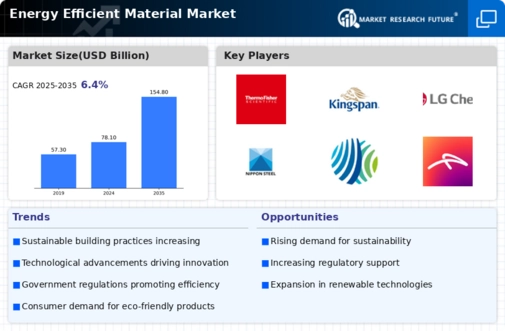The market is characterized by a dynamic landscape where sustainability and innovation are the driving forces. In recent years, there has been a growing emphasis on energy efficiency across various sectors, prompting significant advancements in materials designed to reduce energy consumption. This market is influenced by several factors, including regulatory frameworks, technological advancements, and increasing awareness of the environmental impact associated with traditional materials.
As companies strive to position themselves competitively, the emphasis on research and development has heightened, resulting in a surge of new products that meet the ever-evolving demands for sustainability. By understanding competitive insights within this market, stakeholders can make informed decisions and anticipate future trends that are crucial for long-term success.
Rockwool International has established itself as a significant player, leveraging its technological prowess and innovative approaches to enhance energy efficiency in construction and insulation sectors. The company's strengths lie in its wide range of high-performance insulation products that help improve energy efficiency while ensuring fire safety and noise reduction. With a commitment to sustainability, Rockwool International focuses on the recyclability of its materials, aligning with the shift towards a circular economy.
The brand's strong market presence is bolstered by its extensive distribution network and strategic partnerships, allowing it to effectively reach diverse markets and meet the growing demand for energy-efficient solutions. Its proactive engagement in various initiatives aimed at encouraging sustainable practices further solidifies its reputation as a trusted name in the industry.
Thermo Fisher Scientific primarily focuses on delivering high-quality materials that support energy-efficient applications across different domains. The company is recognized for its robust product portfolios that encompass innovative solutions such as advanced insulation materials and technologies that contribute to reduced energy usage. With a powerful emphasis on research and development, Thermo Fisher Scientific consistently strives to refine its offerings, ensuring they remain at the forefront of energy efficiency advancements.
The company's strong reputation is supported by its dedication to customer service and the development of tailored solutions that meet specific industry needs. By combining deep expertise in material science with a commitment to sustainability, Thermo Fisher Scientific continues to enhance its position within the energy-efficient materials sector, catering to the growing expectations of a market focused on efficiency and environmental stewardship.
























Leave a Comment